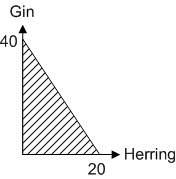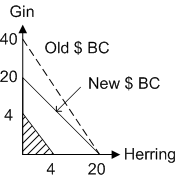The Maxwell School
Syracuse University
Syracuse University

The intercepts show his maximum consumption of each good and are found by dividing his income by the corresponding price: $80/$2 = 40 for gin and $80/$4 = 20 for herring. The slope of the budget constraint is equal to the negative of the ratio of the prices: -Px/Py = -$4/$2 = -2.

